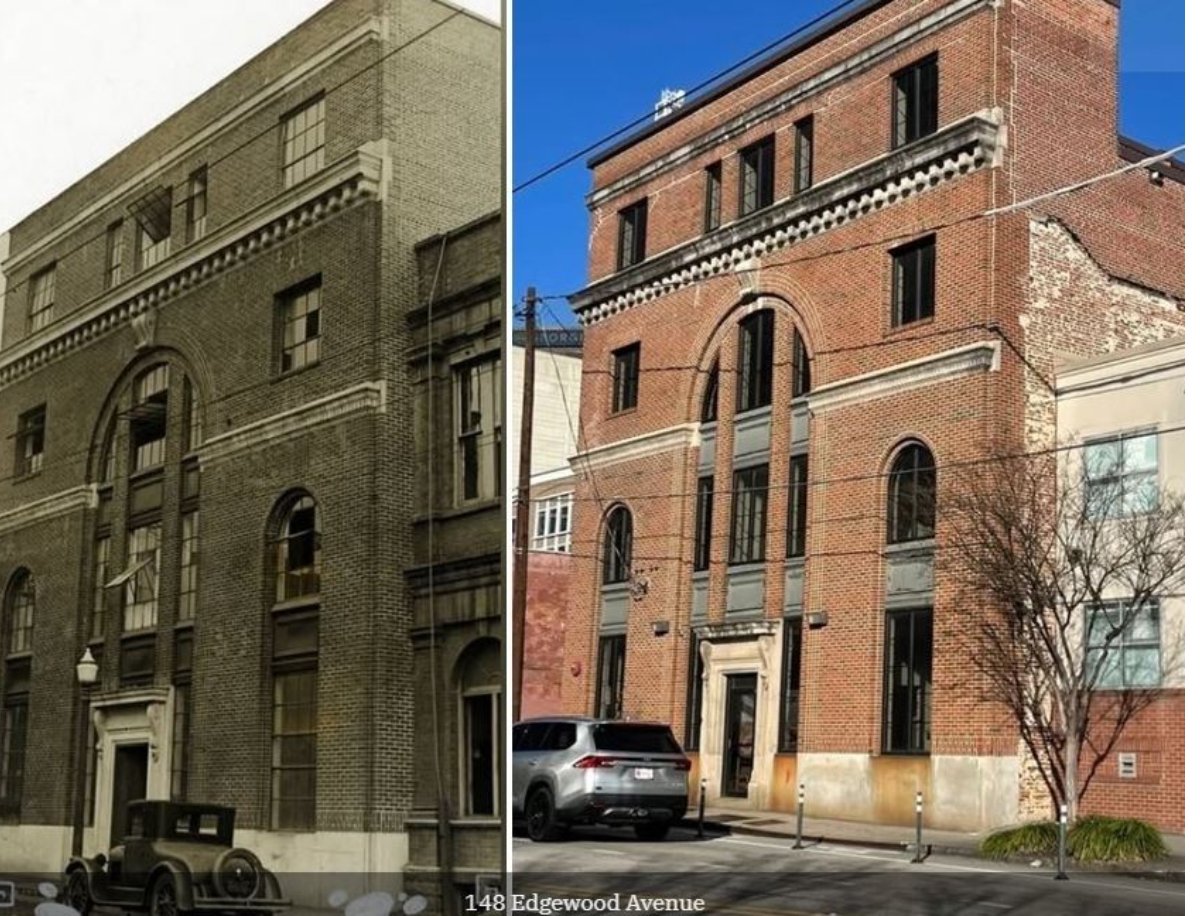Georgia State University has been on a torrid pace of expansion in and around downtown Atlanta. The largest plans include significant changes around Hurt Park and Woodruff Park, transforming the greenspaces into central hubs that encourage student engagement and strengthen GSU’s efforts to create safe, inviting and comfortable spaces for the community.
The redevelopment of Hurt Park involves demolishing Georgia State’s Sparks Hall to extend the campus Greenway across Gilmer Street, linking it with Hurt Park. The reimagined Greenway will feature an elevated plaza, improved walkways, and a vegetated buffer along Courtland Street.
Also, located in the Martin Luther King Jr. National Historical Preservation District, the Fraternity and Sorority Life Plaza (FSL Plaza) would be erected on the site of the building located at 148 Edgewood.

Photo credit: Georgia State University
But there is now an effort underway to save the building from being touched by Georgia State.
According to Jeff Notrica, a Georgia-based historic property preservationist and President of Inman Park Properties, Inc., 148 Edgewood Avenue NE is more than just a building. It’s a rare survivor—a steadfast sentinel—enduring on a street scarred by a Federal highway cutting through its heart and the devastation of urban renewal that demolished much of Atlanta’s Black business and residential areas. Now, it faces an unnecessary final threat: demolition by Georgia State University.
Preservationists: Don’t Touch 148 Edgewood Avenue
“Let us be clear—148 Edgewood is a contributing structure to the Martin Luther King, Jr. – Local Landmark District, designated in 1989,” he says in a recent news release. “It lies squarely within a protected zone that commemorates one of the most vital and historically rich Black communities in the United States. The building’s destruction would not only diminish the physical fabric of this district, but would also deepen the slow erosion of its soul—piece by piece, building by building.”
Preservationists, including the Atlanta Preservation Center (APC) and figures like Notrica, view these demolitions as unnecessary losses of Atlanta’s dwindling historic fabric, particularly in areas impacted by past urban renewal and highway construction that devastated Black business and residential districts.
GSU’s response includes a proposal to replace 148 Edgewood with a Fraternity and Sorority Life Plaza, featuring a mural commemorating the building’s façade, but preservationists, including APC’s David Mitchell, argue this does not adequately honor the site’s history and advocate for adaptive reuse to maintain architectural diversity and economic benefits.
More changes are on the way: GSU’s $107 million “Building Pathways for Success” initiative, funded in part by an $80 million Woodruff Foundation gift, aims to transform the campus into a vibrant “college town” by 2026, ahead of the FIFA World Cup. Key projects include razing Sparks Hall, the university’s first purpose-built structure from 1955, and 148 Edgewood Avenue, a nearly century-old building in the Martin Luther King Jr. Landmark District, to expand the campus Greenway and create a “Panther Quad” with enhanced greenspaces and pedestrian areas.
Georgia State has been expanding outward since acquiring land in the heart of downtown Atlanta off Peachtree Street. Now much of the plans stretch toward the Old Fourth Ward and into areas deemed historic.
The redevelopment of Hurt Park involves demolishing Georgia State’s Sparks Hall to extend the campus Greenway across Gilmer Street, linking it with Hurt Park. The reimagined Greenway will feature an elevated plaza, improved walkways, and a vegetated buffer along Courtland Street.
At the north end of Hurt Park, the 100 Edgewood building will gain a dining area and gathering space, solidifying its role as a key part of the new campus core. Renovations to the building’s first four floors will modernize classroom spaces and add interconnecting stairways for better circulation.
Final Word
The tension between GSU’s downtown Atlanta campus expansion and historic preservationists stems from the university’s plans to demolish historic buildings to make way for modern developments, which preservationists argue erases significant cultural and architectural heritage.
They argue that buildings like 148 Edgewood, a rare survivor of these disruptions, hold significant historical value and could be adaptively reused to preserve the city’s character while meeting GSU’s needs. The APC has expressed hope that GSU’s plans could incorporate preservation, citing the university’s past adaptive reuse of buildings like the Hurt Building and 25 Park Place.
The conflict reflects a broader debate: GSU’s vision for a modern, student-centric campus versus preservationists’ emphasis on retaining Atlanta’s historic identity, especially in a city with a limited stock of historic structures.
More From AtlantaFi.com:




